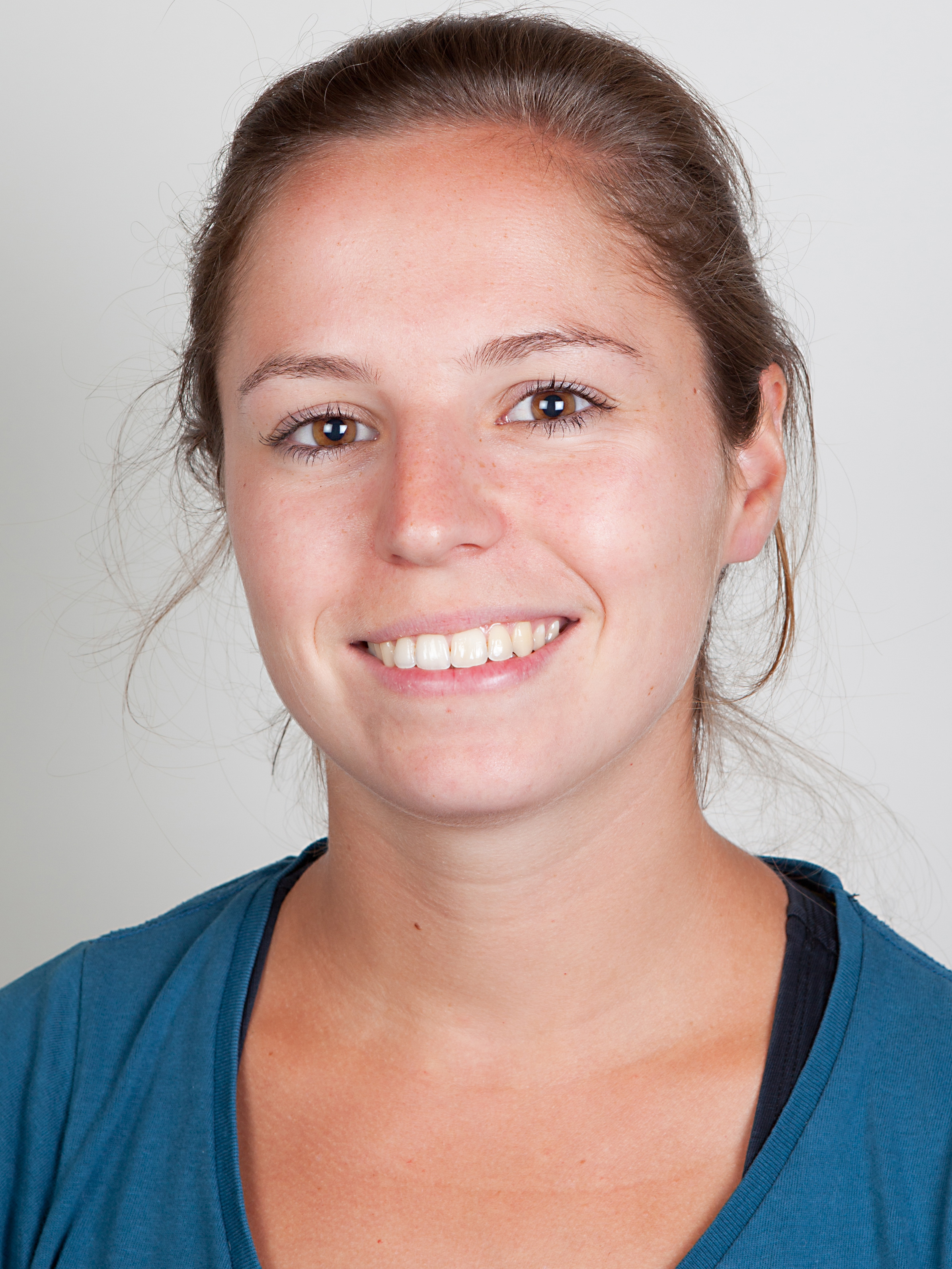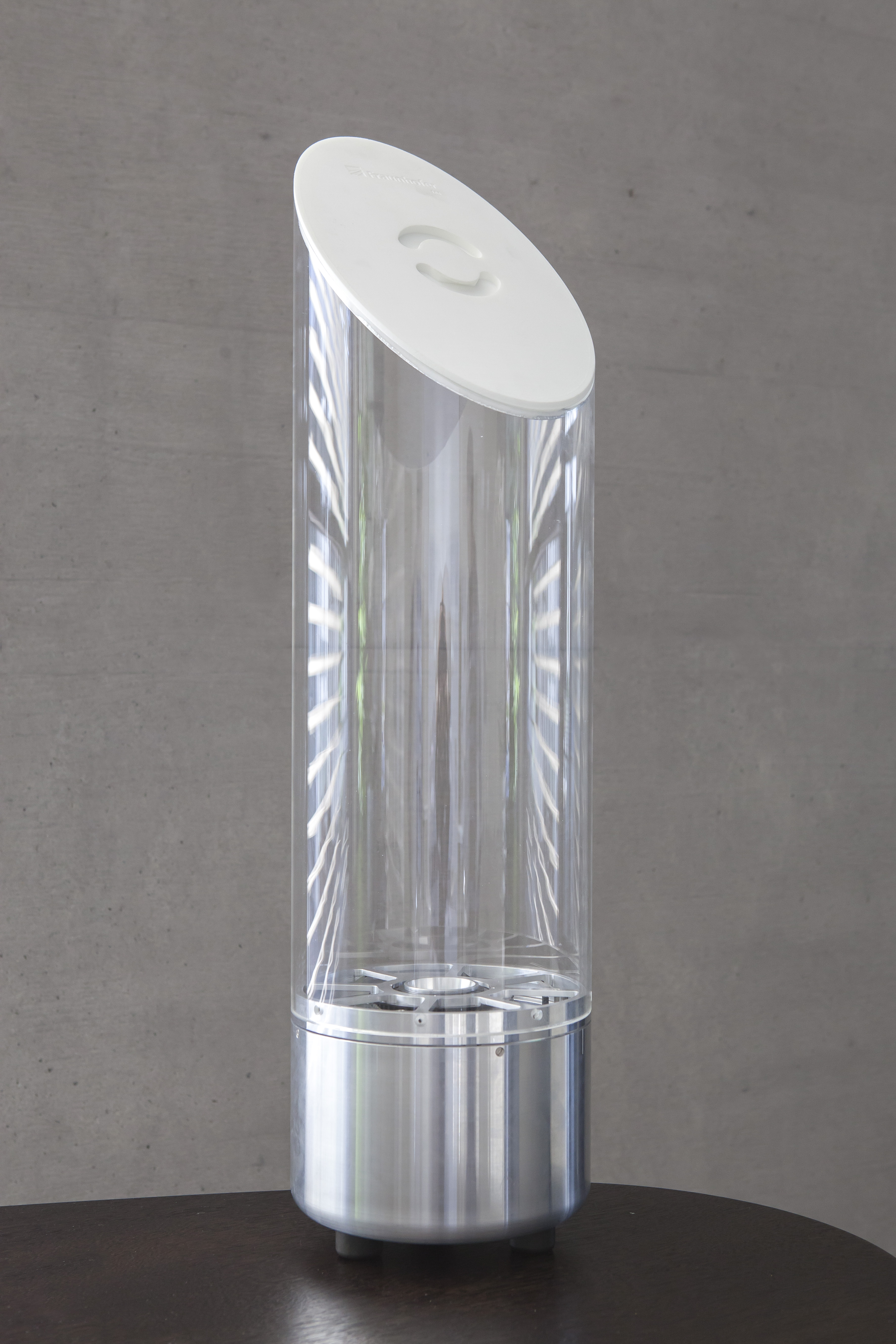

The radar technology developed at Fraunhofer IAF facilitates precise measurements – even through obstacles. In order to use the radar signal for all-round radar measurements, it however requires a flexible, robust and an accurately tailored technical solution. For her final thesis of her vocational training as technician, IAF employee Olivia Lehmann, who recently graduated from the Richard-Fehrenbach industrial school, has developed a mount system for the 94 GHz radar module, facilitating the spread of the radar signal over the radius of 360 degrees. Olivia Lehmann received the award for the graduation year’s best final thesis – and Fraunhofer IAF is able to access new fields of application. In our interview, the technician outlines the impact of own motivation on innovative results.
Which department of Fraunhofer IAF do you work in and what are your tasks?
I’m working in the business unit Microelectronics, where my activities mainly lie in the field of design and construction: I design, for example, mounts for radar modules in satellite dishes or card cages. The engineering designs are then handed over to the technical workshop of Fraunhofer IAF.
You were awarded for the best final thesis of your graduation year. Congratulations! What was the topic of your project and thesis?
The topic »Development, design, construction and mounting of a mechanism for a radar scanner« was created out of a current need of the scientists: They pursued the aim of using the 94 GHz radar module developed at the institute for all-round-measurements.
Therefore it was necessary to design a mechanism that would send the radar signal not only in one direction, but simultaneously in a 360°-radius all around the surrounding area. I was completely free in how to approach this challenge – this way; I could set free my creativity and look for the best technical solution. What really mattered was the aim – facilitating an all-round radar scanner.
And what does your solution consist of?
My concept consisted of designing a fixed base in which I embedded the radar module, so that the radar beam is sent straight upwards. Above the radar module, I installed a parabolic mirror which bundles and focuses the radar signal. Through an inclination about 45° and a constant rotation of the mirror, the radar beam is scattered back and spread in a 360° all around the surrounding area.
Furthermore, it is an important aspect for industrial application that it is possible to measure over different distances with the radar module. For this reason, I designed three parabolic mirrors which focus on 5 m, 10 m and 100 m respectively. These mirrors can be exchanged flexibly and rapidly on site as needed.
For which purpose will this mechanism you developed be used at Fraunhofer IAF in future?
The system I designed is currently being used in a demonstrator of the 360° radar scanner. During customer visits or exhibitions, it serves to demonstrate the technology and Fraunhofer IAF’s service offer.
Of course the system can be reproduced – thus, it will be used in future applications of the all-round radar scanner. This could, for instance, be the case in industrial production halls, where the automated processes of the various machines need to be monitored constantly. A further option for the application of the radar scanner with my mechanism is the identification and localization of drones in the air.
What was your motivation for the vocational training to become a technician?
Originally, I had completed the apprenticeship as technical drawer and have already worked in this profession for several years. I worked in teams with engineers and technicians and was responsible for the preparation of drawings of already existing 3D-models, which were then handed over to the workshop as draft for the manufacturers. In this job, I missed the possibility to use my own creativity – to develop my own design and my own solutions. This is why I decided to complete a further training.
And what brought you to Fraunhofer IAF?
I took the initiative to find a place for my final project during the second year of my apprenticeship and applied at Fraunhofer IAF, because I imagined a research institute to be an interesting field for the development and application of technical concepts. Already in our first meeting, my supervisor Dr. Axel Hülsmann, outlined the idea and the envisaged aim of their project – but at the same time he enhanced that it would completely be up to me how to approach and implement it. This was exactly what I had been looking for!
The work itself, the atmosphere in the department and the enthusiasm of the scientists motivate me every day. This means that my final thesis became a project in which I could realize my own ideas and my true self – and which contributed largely to my personal development due to my success and the respect I received.
You have now completed your apprenticeship. Where will your path lead you next?
My work here at Fraunhofer IAF has strengthened my personality and has proven that I can achieve more than I had thought before. That’s why now I want to continue learning: I have just started studying mechanical engineering in order to work in the development sector in industry.
Which goals would you like to have achieved in 20 years’ time?
My long-term aim for my professional life is scientific teaching. After a couple of years of professional experience in industrial companies, I would like to pass on my knowledge and become a teacher or professor myself. I think it is a very important basis for good teaching to be enthusiastic about the topic and to draw from a large pool of experience. This is what I want to acquire throughout the next years – as well as keeping my enthusiasm.
What exactly inspires you as a technician here at Fraunhofer IAF?
Overall, it is the great openness and tolerance at the institute that fascinates and inspires me: everyone is regarded as equal, everyone is offered the same opportunities and everyone has the chance to proof one’s skills. My colleagues motivate me to try out new practices and solutions, although they might first lead to failures. Only by trying out new things it is possible to come up with new concepts.
During my vocational training and my previous jobs I was often confronted with the still relevant challenge of being accepted as a woman in a technical job. Here, this was never of any issue!
Maybe it is the constant confrontation with new technologies and opportunities which creates such an open and creative atmosphere. In any way, it’s inspiring, motivating and always exciting.
How would you describe Fraunhofer IAF in three words?
Equality – Flexibility – Enthusiasm
 Fraunhofer Institute for Applied Solid State Physics IAF
Fraunhofer Institute for Applied Solid State Physics IAF